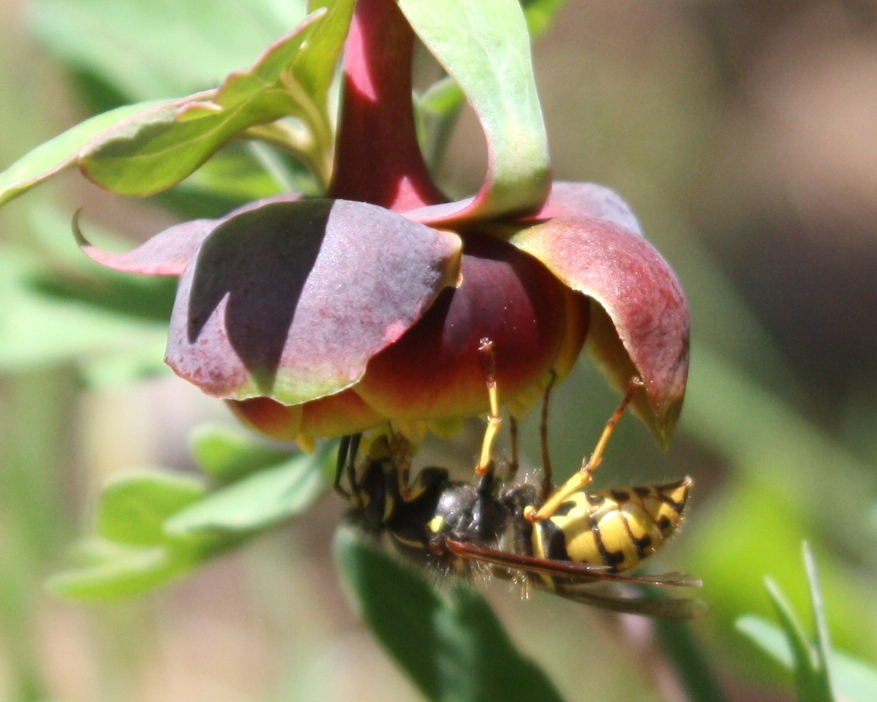Pollination ecology and floral function of Brown’s peony (Paeonia brownii) in the Blue Mountains of northeastern Oregon
DOI:
https://doi.org/10.26786/1920-7603(2013)2Abstract
Brown’s peony, Paeonia brownii (Paeoniaceae), is one of only two peony species native to the Western Hemisphere, yet its pollination ecology and breeding system have never been documented. Using flowering individuals of an endemic colony in the Blue Mountains of Oregon, U.S., we investigated the peony’s pollination system and floral function. We also examined pollen/carpel interactions through experimental pollinations aided by fluorescence microscopy. Paeonia brownii appears to be self compatible and mostly protogynous with floral traits of a generalist pollination system. The flowers appear to attract insects by producing abundant floral nectar secreted from lobes of a perigynous disc throughout their 9-15-days of anthesis. The most common pollen vectors were wasp queens (Vespidae), the large flower fly Criorhina caudata (Syrphidae), and females of Lasioglossum spp. (Halictidae), all of which foraged exclusively for nectar. Whether collected from foraging wasps and flies, anthers, or stigmas, about half the pollen grains appeared fertile. The number of ovules per carpel was about 19. Seed set (seeds/ovule) of naturally pollinated flowers was about 20% with about 4 viable seeds per follicle. The number of fertile pollen grains transferred to the stigma under natural conditions was highly variable but generally low, which may have contributed in part to the low rate of seed set. This study raises further questions about the role of pollen sterility, floral nectar and vespid wasps in shaping a pollinator system that is unusual in Paeonia.

Downloads
Published
How to Cite
Issue
Section
License
Copyright (c) 2013 Peter Bernhardt, Retha Meier, Nan Vance

This work is licensed under a Creative Commons Attribution 4.0 International License.
JPE is an open access journal which means that all content is freely available without charge to the user or his/her institution.
Authors who publish with this journal agree to the following terms:
1) Authors retain copyright and grant the journal right of first publication with the work simultaneously licensed under a Creative Commons Attribution License that allows others to share the work with an acknowledgement of the work's authorship and initial publication in this journal.
2) Authors are able to enter into separate, additional contractual arrangements for the non-exclusive distribution of the journal's published version of the work (e.g., post it to an institutional repository or publish it in a book), with an acknowledgement of its initial publication in this journal.
3) Authors are permitted and encouraged to post their work online (e.g., in institutional repositories or on their website) prior to and during the submission process, as it can lead to productive exchanges, as well as earlier and greater citation of published work (See The Effect of Open Access).
To assure a broader targeted audience, content will be included into databases (such as EBSCO) and directories (such as DOAJ).











